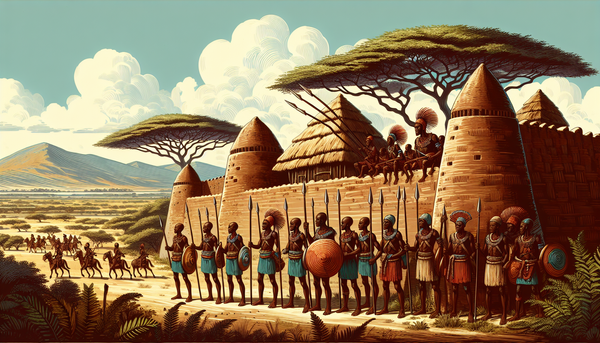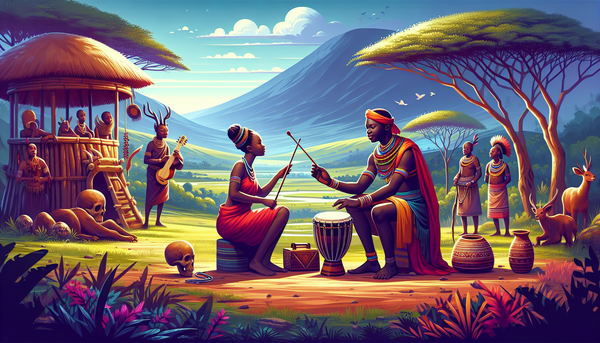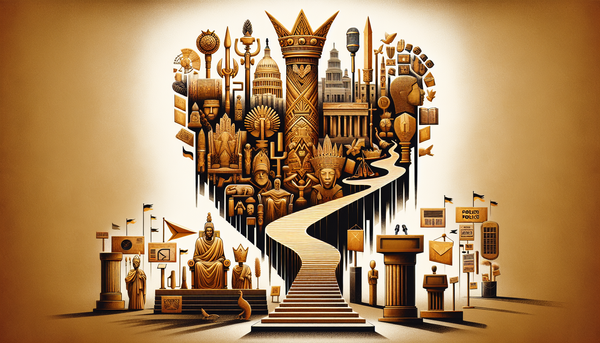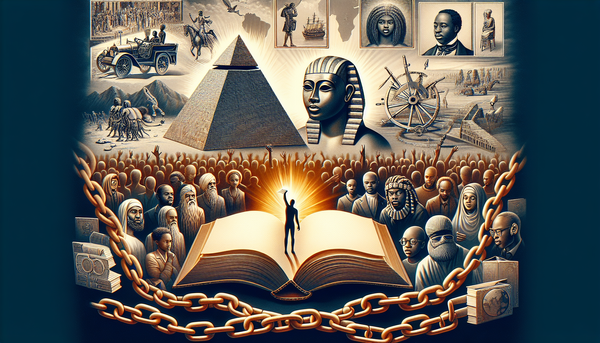African Mythology in Art and Literature
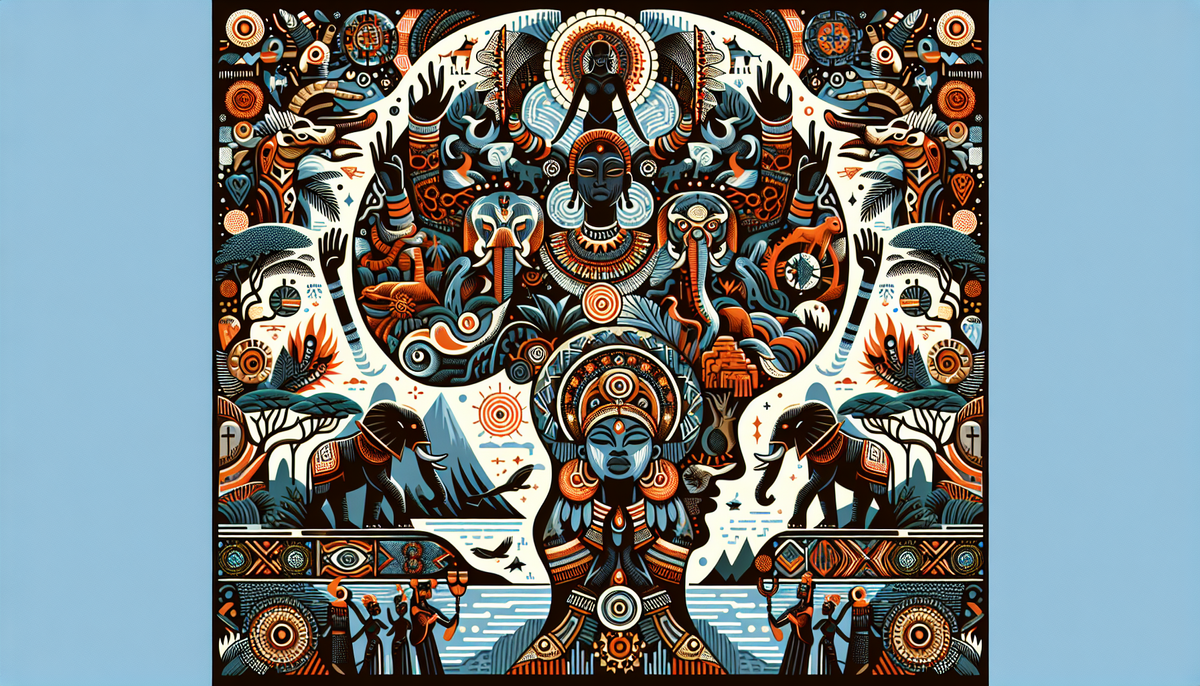
Introduction to African Mythological Influence
African mythology encompasses a rich tapestry of beliefs, stories, and traditions that vary widely across the continent's diverse cultures. Rooted in ancient history, these mythologies serve as a vital framework for understanding the cosmos, nature, and the human experience. Central to African myths are themes of creation, morality, and the interconnectedness of all living beings. The stories often feature gods, ancestors, and mythical creatures who embody cultural values and societal norms.
Art and literature have long been influenced by these mythological narratives, providing a means of preserving and transmitting these age-old beliefs. Visual artists draw inspiration from the vibrant imagery found in myths, translating them into striking paintings and sculptures that resonate with viewers. Literature, too, frequently weaves mythological elements into its fabric, creating narratives that explore the spiritual and existential questions posed by these ancient tales.
The continued exploration of African mythology in art and literature not only honors the past but also fosters a deeper appreciation for the continent's cultural heritage. This fusion of tradition and contemporary expression enables new generations to engage with their roots while addressing contemporary themes, making African mythology a living, evolving force in global creative discourse.
Symbolism in African Traditional Paintings
African traditional paintings are rich in symbolism, with colors, shapes, and patterns often conveying deep cultural meanings. Each brushstroke is imbued with significance, reflecting the beliefs, myths, and philosophies of various societies. For instance, the color red might symbolize strength and vitality, while blue may represent harmony and peace. These colors are not chosen arbitrarily; their meanings are rooted in the community's history, environment, and worldview.
Animals, plants, and geometric shapes frequently appear in African paintings, each carrying its own interpretation. A lion might embody courage and leadership, while a river can symbolize life and sustenance. Abstract forms often represent spiritual concepts, bridging the gap between the physical and metaphysical realms. The use of symbols allows artists to communicate complex ideas, enabling viewers to access layered meanings embedded within the artwork.
Furthermore, traditional techniques and materials enhance the connection between art and its cultural context. Many artists use natural pigments derived from local plants and minerals, embedding the artwork with a sense of place. As a result, African traditional paintings serve not only as aesthetic expressions but also as powerful storytelling mediums that preserve and celebrate cultural identity across generations. Through these symbolic representations, the rich heritage of African mythology continues to thrive in the contemporary art scene.
Archetypes in Contemporary African Sculpture
Contemporary African sculpture often revisits and reinterprets traditional archetypes, breathing new life into ancient themes that resonate with modern audiences. These archetypes, such as the warrior, the mother, and the trickster, provide a foundational vocabulary for artists to explore complex ideas related to identity, culture, and social issues. By utilizing familiar figures from African mythology, sculptors create works that evoke deep emotional connections and spark conversations about contemporary life.
Sculptors like El Anatsui and Yinka Shonibare incorporate traditional motifs with innovative materials and techniques, challenging perceptions of African art while honoring its roots. For example, Anatsui's large-scale installations crafted from discarded materials speak to issues of consumerism and environmental sustainability, engaging the viewer in a dialogue about colonial history and cultural preservation. Shonibare's use of Dutch wax fabric in sculptures critiques postcolonial identity and globalization, artfully merging past and present.
These contemporary approaches highlight the fluidity of African archetypes, demonstrating their relevance in a globalized world. By adapting these figures to reflect contemporary realities, artists ensure that the wisdom contained in ancient myths continues to inform and inspire new generations. Ultimately, contemporary African sculpture serves as a bridge between tradition and innovation, revealing the dynamic interplay of culture and creativity.
Narratives Shaped by Ancient Mythology
Ancient mythology serves as a profound source of inspiration for storytelling across African societies, weaving rich narratives that capture the imagination and convey essential truths about life, morality, and human nature. These myths, often passed down through generations via oral traditions, inform the fabric of contemporary storytelling, shaping the themes and character archetypes found in modern literature.
Many contemporary African authors, such as Chinua Achebe and Ngũgĩ wa Thiong'o, draw heavily from ancient myths, grounding their narratives in folkloric elements that resonate deeply with their readers. For instance, Achebe’s works often explore the complexities of Igbo culture and the conflicts brought by colonialism, while weaving in traditional narratives about heroes and moral lessons. Similarly, Ngũgĩ’s literature reflects the struggles against oppression, echoing the resilience found in mythical tales of triumph and justice.
These narratives often feature themes of unity, sacrifice, and the struggle between good and evil, mirroring the age-old stories that have shaped cultural identity. By incorporating elements of mythology into their works, contemporary writers not only celebrate their heritage but also address pressing social issues, breathing new life into timeless tales. This integration creates a powerful dialogue between past and present, highlighting the enduring relevance of ancient mythology in modern storytelling.
Modern Literature and Mythological Motifs
In contemporary literature, mythological motifs from African traditions continue to serve as a vibrant wellspring of inspiration for writers striving to explore profound themes and complex human experiences. Authors incorporate these rich narratives to enhance their storytelling, connecting characters and situations with archetypal symbols that resonate across cultures. By doing so, they provide readers with familiar frameworks through which to understand contemporary dilemmas.
Many modern African writers, such as Chimamanda Ngozi Adichie and Ben Okri, employ mythological elements to address social and political issues within their narratives. Adichie’s storytelling often integrates folklore and proverbs, imbuing her characters' journeys with the wisdom and moral lessons inherent in traditional tales. In "The Famished Road," Okri utilizes the motif of the spirit child to explore themes of existence and the intertwining of the real with the supernatural.
These mythological motifs serve not only as narrative devices but also as tools of resistance, highlighting cultural resilience in the face of globalization and cultural assimilation. By weaving ancient stories into modern contexts, authors illuminate the ways in which mythology shapes identity, belief systems, and values, ultimately breathing new life into the collective consciousness of African societies and enriching the global literary landscape.
Influence of Oral Traditions on Visual Arts
Oral traditions have profoundly influenced visual arts across Africa, weaving a rich tapestry of cultural narratives, values, and aesthetics that resonate in contemporary artistic expressions. These traditions, which encompass storytelling, proverbs, and song, serve as a foundation for understanding and interpreting the world. As artists engage with these oral histories, they transform spoken words and ancient tales into visual representations, creating dynamic artworks that communicate shared cultural experiences.
African artists draw inspiration from the themes and characters found in oral traditions, translating them into a variety of mediums, from painting and sculpture to textiles and beadwork. For instance, the motifs depicted in traditional masks often reflect stories from folklore, embodying ancestral spirits or social ideals, and enriching community rituals. Artists like Julie Mehretu blend personal and collective narratives, employing abstraction that echoes the rhythms and stories of oral traditions, suggesting that every image carries its own storytelling power.
The interplay between oral tradition and visual arts fosters a sense of continuity, allowing contemporary artists to engage with their heritage while also addressing modern themes. This ongoing dialogue ensures that the wisdom and creativity inherent in oral cultures remain vibrant, allowing new generations to connect with their past and envision their future.
Representation of Deities in Popular Media
The representation of deities in popular media has undergone significant transformation, reflecting both traditional beliefs and modern interpretations. In film, literature, and video games, creators often draw upon rich mythological narratives to construct characters that embody the qualities and attributes of ancient gods. This portrayal serves to reintroduce these divine figures to contemporary audiences while exploring themes of power, morality, and humanity.
For instance, in Marvel's "Thor" franchise, the character of Thor, based on Norse mythology, is depicted as a complex hero navigating personal conflicts while upholding his godly responsibilities. Similarly, films like "Black Panther" introduce African deities, such as the panther goddess Bast, intertwining cultural heritage with superhero narratives and providing a platform for underrepresented stories.
Moreover, television series like "American Gods" illustrate the clash between ancient deities and modernity, showcasing how traditional beliefs adapt and evolve in contemporary society. These representations not only educate audiences about different pantheons but also challenge stereotypes, inviting a deeper understanding of spirituality and cultural identity.
As such, popular media serves as a vital conduit for cultural dissemination, allowing ancient deities to transcend their mythological roots, continually reshaping their significance in an ever-changing world.
